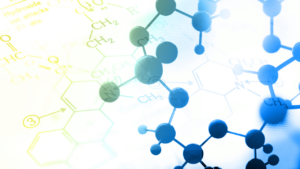Description:
Glow Discharge Optical Emission Spectroscopy (GD-OES) is an analytical technique used for elemental analysis of solid conductive materials. It operates by generating a glow discharge plasma in a low-pressure gas environment (typically argon) within a vacuum chamber. The excited atoms in the sample emit light at characteristic wavelengths, which is then analyzed to determine the elemental composition and concentration of the sample.
Principle: In GD-OES, a high voltage is applied to the sample in a vacuum chamber, producing a glow discharge plasma. The excited atoms emit light (optical emission) at specific wavelengths characteristic of the elements present in the sample. The emitted light is dispersed and detected by an optical spectrometer, allowing for the identification and quantification of elements based on their emission spectra.
Applications:
- Metallurgy and Material Science: GD-OES is widely used in metallurgical industries to analyze metal alloys, determine impurities, and characterize materials, particularly for quality control and research purposes.
- Semiconductor Industry: It’s employed for analyzing semiconductor materials, such as silicon wafers, to assess purity and detect trace elements that may affect semiconductor device performance.
- Surface Coating Analysis: GD-OES aids in studying surface coatings, thin films, and multilayer structures to analyze elemental composition and layer thicknesses.
- Environmental Monitoring: It’s used for environmental monitoring to analyze contaminants, trace elements, and pollutants in various samples.
Strengths:
- Multi-Element Analysis: GD-OES offers simultaneous multi-element analysis, enabling the detection of a broad range of elements within a sample.
- High Sensitivity and Accuracy: It provides high sensitivity for trace elements and accurate quantification of elemental concentrations.
- Depth Profiling Capability: GD-OES can perform depth profiling, analyzing elemental distributions at various depths within a sample.
Limitations:
- Sample Conductivity Requirement: Similar to other glow discharge techniques, GD-OES requires solid conductive samples, limiting its applicability to non-conductive or insulating materials.
- Depth Profiling Resolution: Depth profiling may have limitations in achieving high-resolution depth profiles in complex layered materials.
- Matrix Effects and Interferences: Interferences and matrix effects can occur, impacting the accuracy of quantitative analysis, especially in complex matrices.
- Sample Preparation and Handling: Proper sample preparation and handling are critical, and surface conditions can affect the accuracy of results.
In summary, Glow Discharge Optical Emission Spectroscopy (GD-OES) is a valuable technique for elemental analysis in solid conductive materials, offering simultaneous multi-element analysis, high sensitivity, accuracy, and depth profiling capabilities. Its limitations include sample conductivity requirements, depth profiling resolution, matrix effects, and sample preparation considerations.


 GDMS – Glow Discharge Mass Spectrometry
GDMS – Glow Discharge Mass Spectrometry